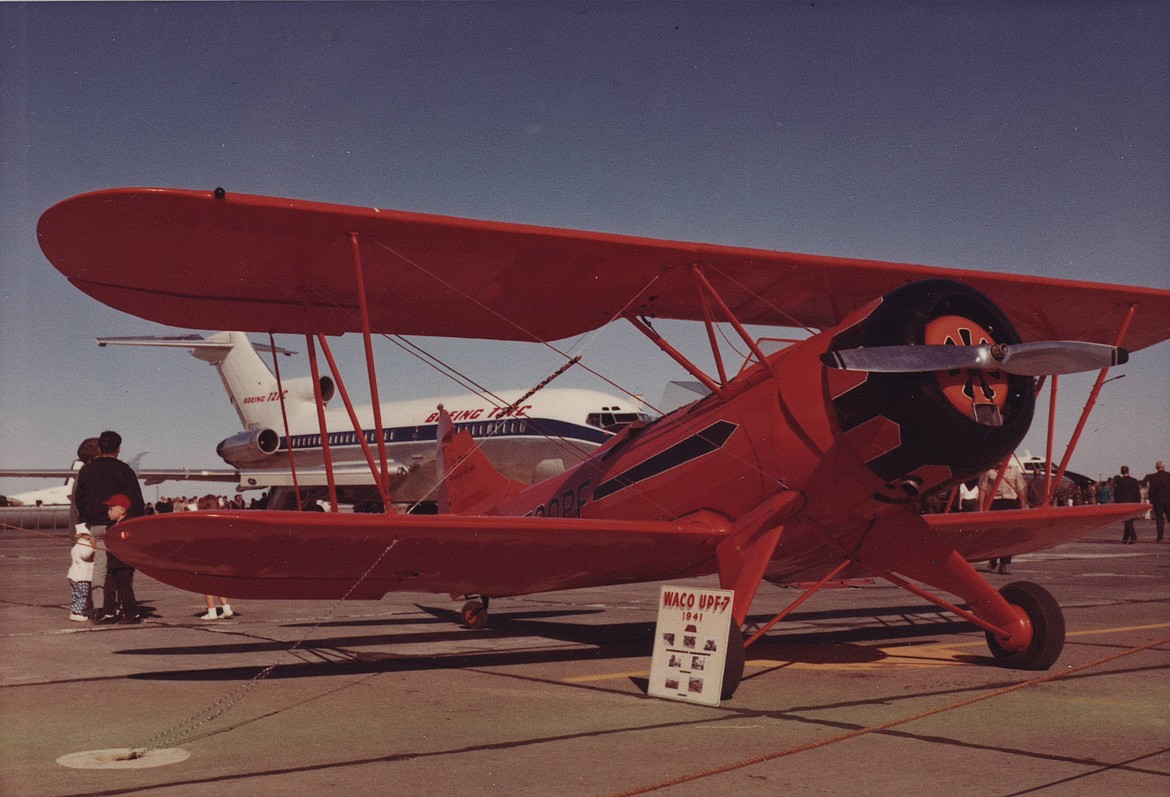1966: Larson AFB becomes Port of Moses Lake
MOSES LAKE — The year was 1964. Larson Air Force Base was a hive of activity, employing over 4,000 people and housing twice that many. But on Nov. 24, 1964, that all changed.
Larson Air Force Base was originally opened on Nov. 24, 1942, as the Moses Lake Army Air Base. It was a training field for pilots of the P-38 and crews of the B-17 Flying Fortress. At the end of World War II, the base was mothballed.
In 1948, it was reopened as a U.S. Air Force Base. It received the name Larson Air Force Base in 1950, as a way to give honor to Donald A. Larson, of Yakima, who had died while flying over Nazi Germany.
“One of the tasks of the new base was to patrol the skies over Hanford’s atomic facilities, the Grand Coulee Dam and into Canada,” wrote Jim Kershner in the book “The Port of Moses Lake: A History.” “In 1960, it became a Strategic Air Command base under the 4170th Strategic Wing and also acquired three Titan missile-launching facilities, scattered in the countryside.”
In April of 1963, Col. Clyde Owen assumed command of Larson Air Force Base.
“Larson appeared to be a vital component in the Cold War national defense system,” Kershner wrote. “Yet in other ways, there were signs that Larson was among the lowest of the Air Force’s priorities.”
Owen said that at budget time, he was only given the bare minimum to survive. The facilities had never been upgraded. What money that was spent on the facility made things worse.
“I don’t know where in the world they got a bunch of pink paint, but they did,” Kershner quotes Owen as saying. “And they painted everything the worst color you had ever seen.”
On Nov. 24, 1964, Owen received a letter from the U.S. Department of Defense. After reading it, he called the editor of the Columbia Basin Herald and said he had “some pretty strong news.”
“The harried editor asked if the news could wait, since he was about to roll the presses,” Kershner wrote. “Owen delivered his bombshell. It was the presses themselves that would have to wait as the front page was remade.”
The news was a devastating blow to Moses Lake and the surrounding towns. Larson Air Force Base had a payroll of $15 million annually. Local suppliers received $4.5 million per year. The big question on the minds of residents was how they were going to survive this disaster.
The base was given one and a half years before it would close. During this time, the Moses Lake community began looking into different options to survive the upcoming removal of the Air Force.
It was decided that a Moses Lake Port District should be created and that it should acquire the Larson Air Force Base. On Nov. 2, 1965, Moses Lake voters approved the port district in a 1,835 to 201 vote.
One of the first things the newly elected Port of Moses Lake commissioners did was contact Boeing to see if it was interested in continuing to test planes on the base runways. Boeing had been using the site for testing for many years. The commissioners knew that they needed Boeing’s support to be able to get the runways and land from the General Services Administration (GSA). They knew that Big Bend Community College and the hospital would also be receiving some of the property.
“As it turned out, Boeing’s involvement was more than sufficient to solidify the Port’s case,” Kershner wrote. “The GSA subsequently granted the Port of Moses Lake all of the runways and almost all of the other aviation-related facilities at the old airbase. Big Bend Community College was given three hangars for use in its flight and aviation mechanics program and would eventually acquire larger chunks of land, to which it would later move its entire campus.”
After receiving the airfield, the commissioners renamed it the Grant County Airport as of July 1, 1966, and signed the contract with Boeing.
On Oct. 8, 1966, the Port of Moses Lake held an official dedication ceremony. U.S. Senator Warren G. Magnuson was the keynote speaker.
“This ceremony represents a major milestone in the development of central Washington state,” Kershner quotes Magnuson as saying to those in attendance. “The ingenuity and persistence ... displayed by the people of Grant County set an example which all communities might exemplify. Your past achievements give every reason to expect a bright future.”
Rachal Pinkerton may be reached via email at rpinkerton@columbiabasinherald.com.









